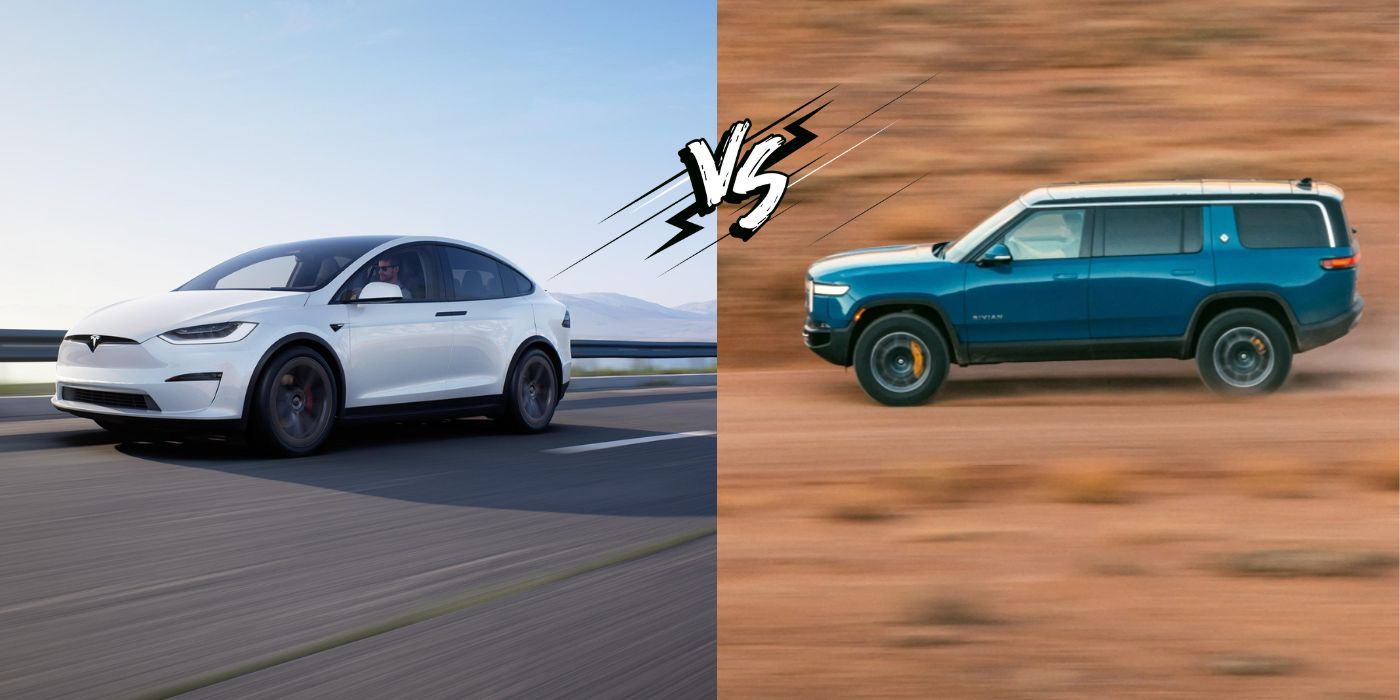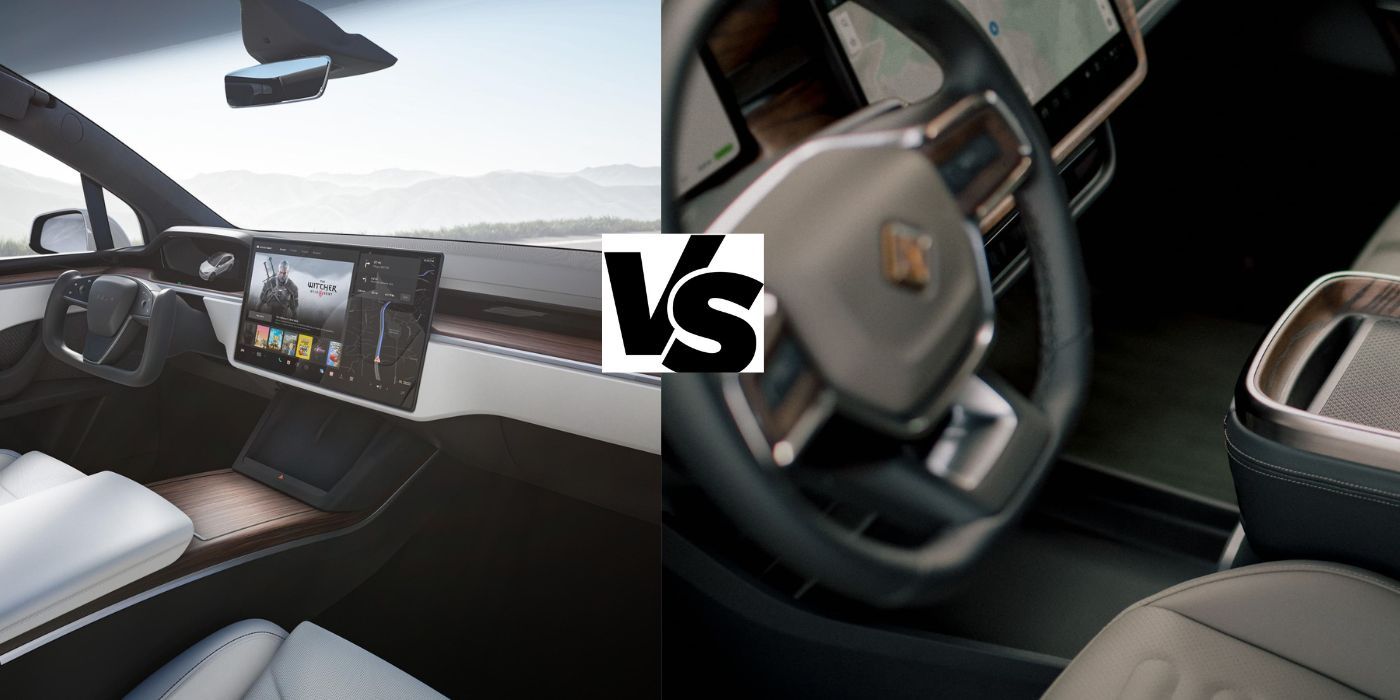The Tesla Model X and Rivian R1S are two of the hottest electric SUVs available today, but when pit against each other — which should you get? When it comes to buying an EV, there's a model for every consumer, thanks to the continuous growth in the EV space. Both the Model X and R1S are luxury vehicles, offering many high-end features that buyers won't get with the more affordable alternatives that are now available or releasing soon. Although the Model X has been in production longer (since 2015), Rivian jumped into the fray with a well-rounded product.
There are many deciding factors to consider when selecting an electric vehicle model, including in-vehicle features and performance. But the biggest consideration for many buyers is the price. So, how much do both EVs cost? The Model X, like other Teslas, recently received a major price cut, with the two variants now priced at $109,990 and $119,990, respectively. Meanwhile, the R1S has a lower starting price of $78,000, which goes up to $92,000 with the quad-motor version. The based model R1S also qualifies for a clean vehicle tax credit. Rivian is the better choice in terms of price. But how do the two compare in other key areas like range, performance, and more?
Performance, In-Vehicle Offerings, And Safety Features
Range anxiety and the lack of easily accessible public charging remain major concerns in the industry, so the estimated range and performance of an EV are as important a metric as any. The Model X is a long-range EV, with the base and premium trims offering 348 miles and 331 miles, respectively. It has a top speed of 149mph, and Tesla called the high-end SUV the “Quickest accelerating SUV in production today.” The Plaid trim brings more power (1,020 hp and 0-60 mph in 2.5 seconds) with its tri-motor configuration.
Rivian offers variants with a few powertrain and battery pack configurations. The dual-motor version offers a range of 260 miles when paired with the standard battery pack. Rivian doesn't specifically mention the range when the battery is upgraded to the larger battery option, but it will understandably be higher. Meanwhile, the quad-core powertrain variant is only available with the larger battery pack and offers a range of 321 miles. The Model X has the advantage of more range, although real-world range numbers may vary since it depends on a variety of factors like weather and driving conditions.
Charging both EVs shouldn't be a bother since both manufacturers are expanding their network of public Level 2 and DC fast chargers. However, one of Tesla's biggest selling points is its expansive supercharging network. It's not without issues, but it's definitely a huge step up from other public charging options. If home charging isn't an option, any potential buyer who is wholly reliant on public charging should consider getting a Tesla. Speaking of home charging, the Tesla Wall Connector ($425) is also significantly cheaper than the Rivian Wall Charger ($750)
The Model X and R1S have seating for up to 7 passengers. The Tesla SUV has a high-resolution 17" touchscreen, which makes watching videos, playing games, and finding key information a breeze. It also comes with a yoke steering wheel and a panoramic windshield to round out its otherwise minimalist interior. The R1S has a more traditional-looking interior but with a modern twist across the board, with large screens, wireless chargers, multiple ports, and a glass-only panoramic roof.
The Model X comes with Basic Autopilot, which buyers can upgrade to either Enhanced Autopilot or Full Self-Driving. While the former offers features like the ability to change lanes automatically and Smart Summon, the latter adds traffic light and stop sign recognition and city street driving. Rivian's active driving assistant, Driver+, possesses standard features like Highway Assist and Blind Spot Warning. A Consumer Reports ranking places Tesla's driving assistance technology one spot (7th) above Rivian's (8th).
While both EVs are incredible choices, the Model X offers better performance, a more robust public charging network, cheaper home charging equipment, and a more feature-packed driving assistance system. Meanwhile, the R1S is cheaper, with the price point going even lower with the option of a federal tax credit. There's also plenty of competition in the luxury electric SUV segment, with options like the Polestar 3, Cadillac Lyriq, and Volvo EX90.


